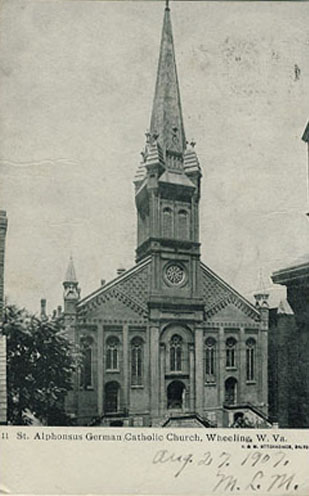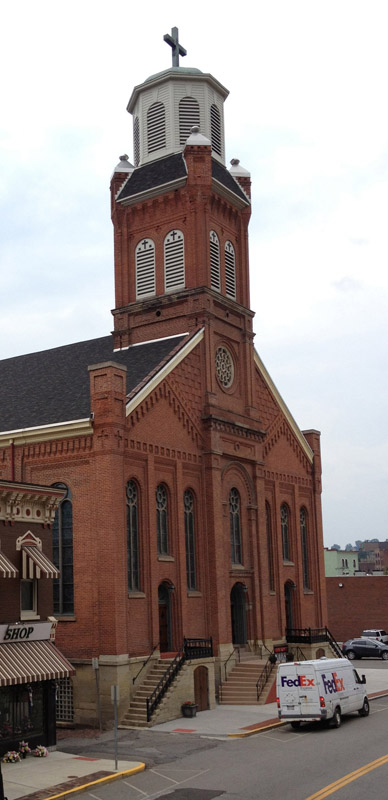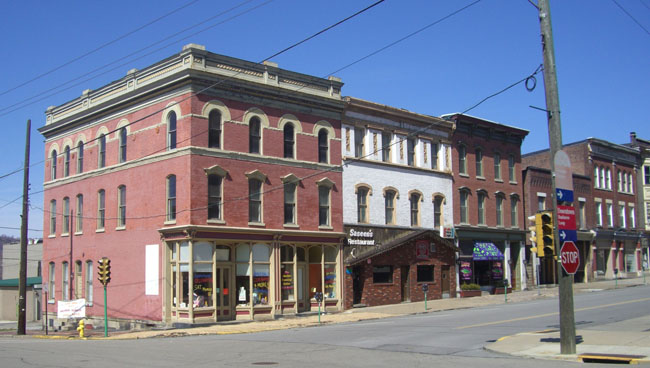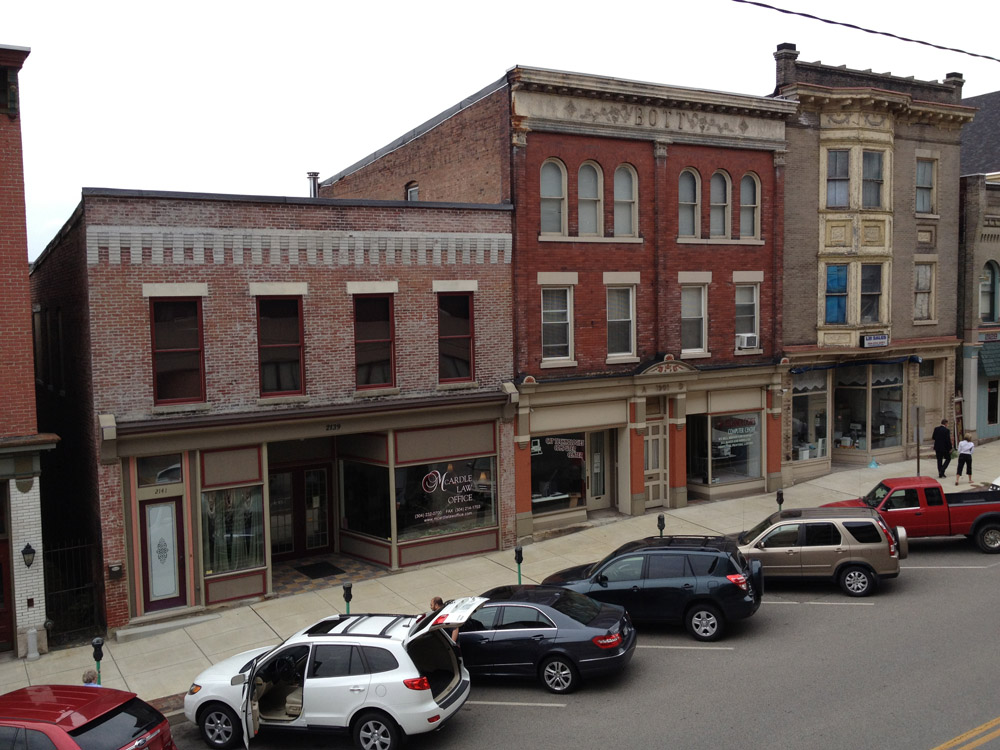Market St - 2100
Contents
- 1 2100 Block, West Side
- 2 2100 Market - Public Library
- 3 2112 Market - First Christian Church - now Church of the Living Word
- 4 THE FIRST CHRISTIAN CHURCH OF WHEELING
- 5 2118 Market - Greek Evangelical Lutheran Zion's Church - Towngate Theater
- 6 St. Alphonsus Building
- 7 St. Alphonsus Church
- 8 South End
- 9 2151-3 Market - Menkemeller Building
- 10 2147-9 Market - Louis Ebling Building
- 11 2143-5 Market - Hosenfeld Building
- 12 2139-2141 Market - Elizabeth Emblen Building
- 13 2131 to 2139 - old buildings and new cars.
- 14 2135 Market - Bott Building
- 15 2131 Market - Woeber Building
- 16 2129 Market - Auber Building
- 17 2125 Market St - Mary A. Reed Building
2100 Block, West Side
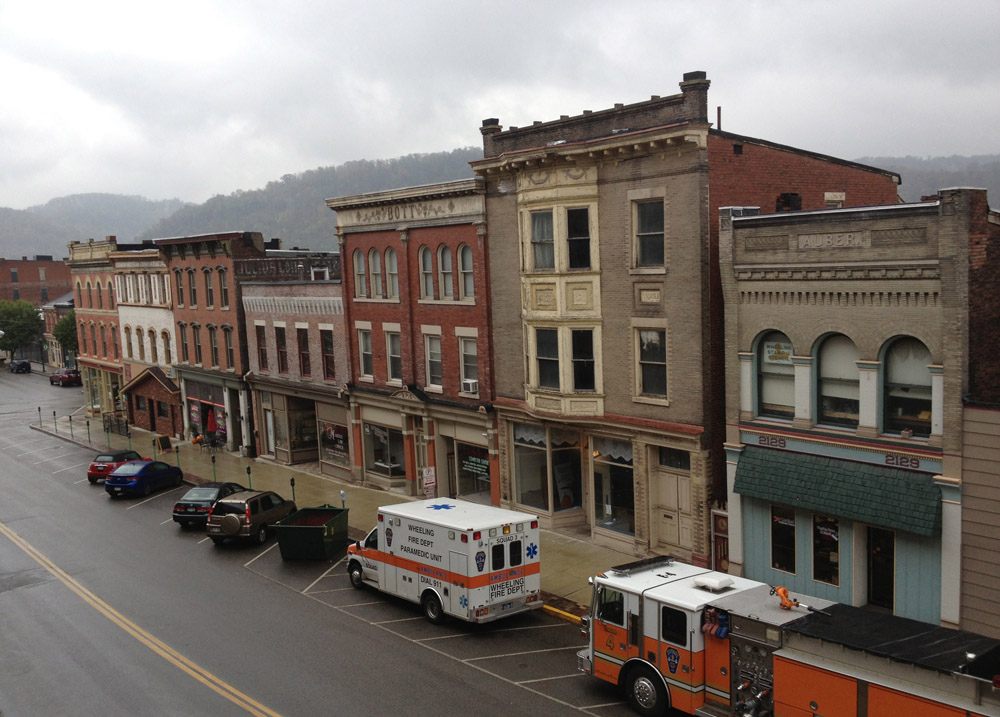
2100 Market - Public Library
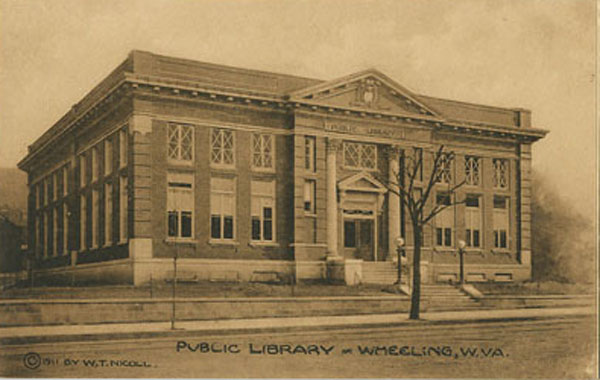
Undated postcard from Chuck Julian Collection, before the 3rd story was added.
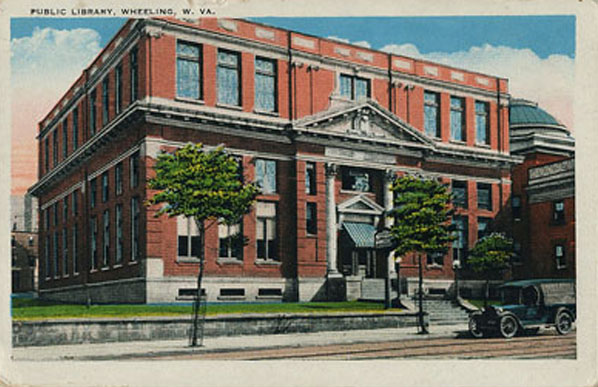
Undated postcard from Chuck Julian Collection, after the 3rd story was added.

1911. Neoclassical: 3-stories and basement, tall 1st story, 3rd story a later addition
Current (1980s) use: Georgian Center (Banquet, Reception, and Party Rooms)
Original use: Public library
Historical Significance: The library is especially important because of its connection with the labor movement. The City fathers authorized a vote on a $50,000 library levy to purchase a site and for books and maintenance in order that there might be a Carnegie Free Library in Wheeling. The proposed library had strong supporters from leading businessmen and prominent citizens. However, the members of the Ohio Valley Trades and Labor Assembly were firmly opposed to a monument to Andrew Carnegie and worked vigorously for the defeat of the levy. On January 26, 1904, the levy was turned down by 201 votes. Wheeling became the first American city to reject a Carnegie grant. The Board of Education eventually voted to erect a library with its own resources which opened in 1911.
From Fluty-National Register Nomination
Now known as Bennett Square, a building with law offices.
2112 Market - First Christian Church - now Church of the Living Word

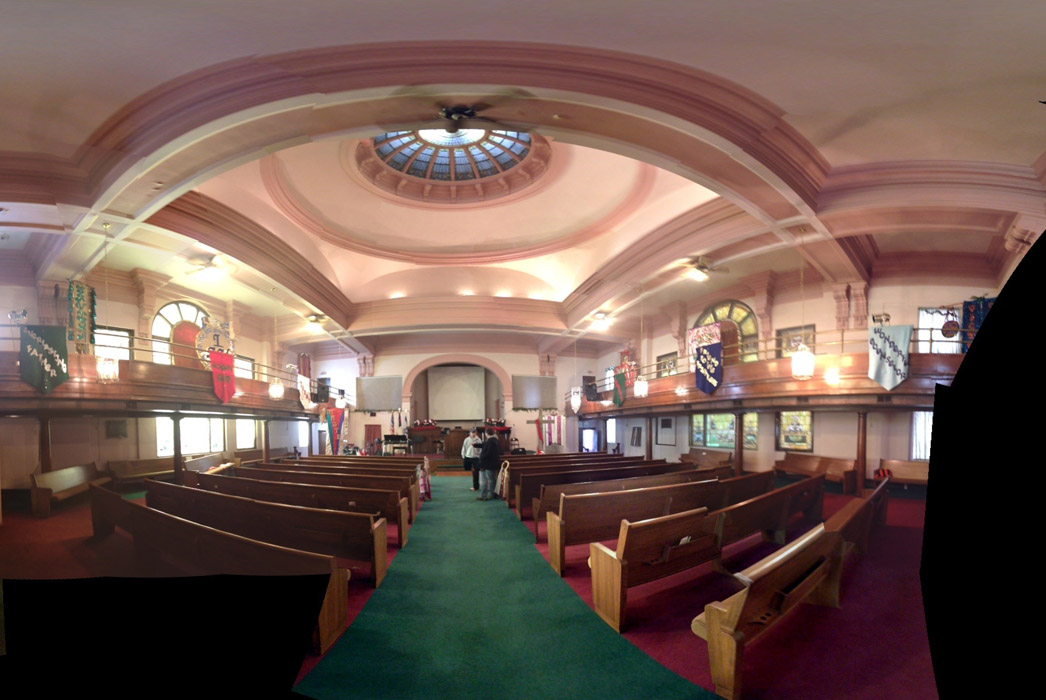
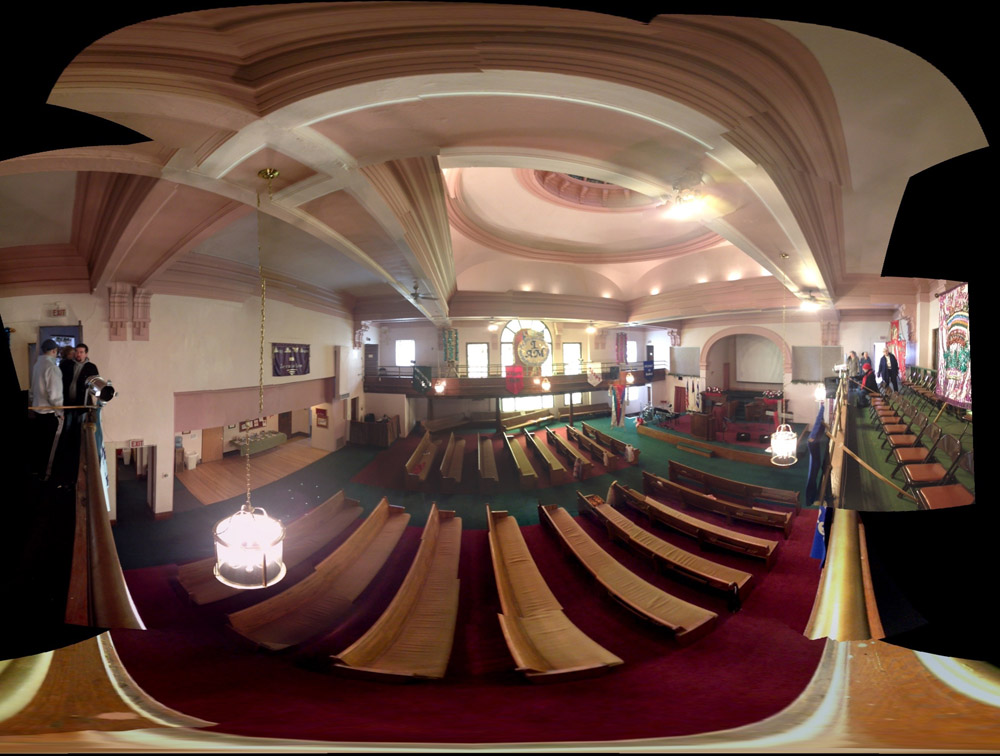

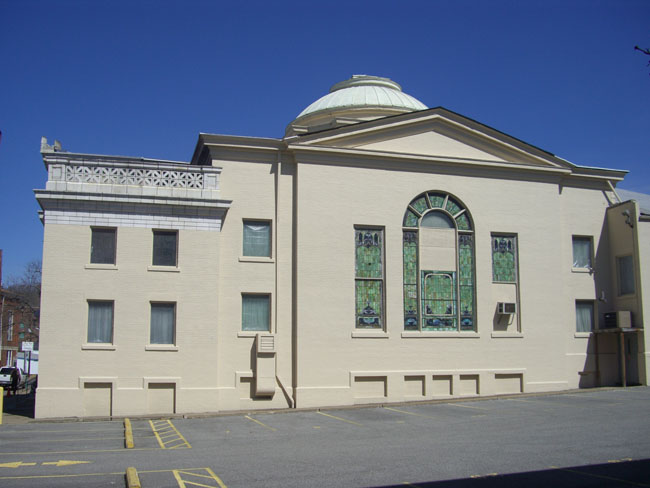
View from the south side - more impressive from the front!
Built in 1913 following a revival in 1912 by Billy Sunday that increased membership to 473. In 1973 the congregation moved to 1343 National Road. info from Friends of Wheeling newsletter, Feb 2012.
History of the Church from Kate Quinn, Feb 2012:
THE FIRST CHRISTIAN CHURCH OF WHEELING
The first congregation of this church met in 1832 in private homes. After two years they moved to Father William McKay’s schoolroom then to the Lancasterian Academy, the Market House, the rear of the Victoria Theater, and then to a hose room used by the hook and ladder company on 21st street.
They built their first church on the Southwest corner of the alley between 21st and 22nd streets in 1855. Alexander Campbell made the dedication. By 1866 the church was called the Disciples of Christ and its first minister was Dr. Jabez Hall.
St. John’s Episcopal Church was on the current site and the land was purchased in 1875 for $10,100. A Second Christian Church was built in 1897 on Wheeling Island to accommodate the burgeoning Sunday School, already meeting on the Island, but in 1900, the lot was sold and the Sunday School closed.
Both the Board of Education and the Scottish Rite Masons wanted to purchase the Market Street property, but it was decided to keep it and to build the edifice which now stands at 2112 Market Street. The Billy Sunday campaign of 1912 added 473 new members to the church which allowed the start of the new building. The present building was dedicated in October of 1913 and they claimed a membership of 1300, one of the largest churches in the state.
At the dedication, the Wheeling News Register reported, “Much credit is due to the building committee and the designer of the edifice as it is a building that will stand for ages to come as a living memorial to those who gave of their worldly means for its dedication.” The paper described the windows of green object glass and said, “Hanging pendants from the ceiling are large suspended lights which throw the light against the buff ceiling which again reflects rays to the floor below, giving it a sunset appearance.”
The First Christian Church then established brances in Warwood, Elm Grove, and Beech Bottom. In 1941, the Reverend McKinney delivered his last sermon and joined the army as a chaplain.
In 1962, the sanctuary was redecorated and the organ was converted from pneumatic to electric. By 1964, the church purchased the old Stifel property at 1343 National Road and named the thirteen acre site Christian Acres. The cornerstone from the old church was moved to the new church when it was completed in 1973 and opened. It contained a Bible, a hymnal, some newspapers, and coins.
The Eagles bought the old church (on Market Street) in June of 1973, but the congregation took four of the five stained glass windows with them to their new church.
The architect of the old church is unknown.
2118 Market - Greek Evangelical Lutheran Zion's Church - Towngate Theater
c1850. Eclectic: Gothic, Greek and Italian Revival with a central tower and large Gothic Revival windows.
Note: The building was constructed as a Congregational Church and remodeled for use as a Lutheran Church in 1852. Ten years later a tornado struck the building. The roof fell in and the north and south walls were damaged. Three children were killed and ten more injured. The church was rebuilt and rededicated the following year.
Original use: church
Current use: Oglebay Institute - Towngate community theatre (seats 166)
Historical significance: This is one of the oldest church buildings in Wheeling, and the congregation was German. The church's history relates that its growth in membership was due to the constant arrivals of new families from the Lutheran sections of Germany. Once settled, these immigrants influenced their friends still in Germany to come to Wheeling. These families must have had an important impact on Centre Wheeling and the entire city.
From Fluty-National Register Nomination
St. Alphonsus Building
2111 Market Street - demolished!
Wheeling Catholic Consolidated Schools
(East wing), 1875. Italian Romanesque Precedent: 3-stories.
From Fluty-National Register Nomination
In April 2011 the St Alphonsus School and Monastery/Rectory just to the north of the church were demolished. The school was built in 1875 and the rectory added in 1893. Classses were last held in the school in 1984. Rev. Frank O'Kruta, pastor of the church, said that the building was too old and it cost too much to rehabilitate it. He said the buildings 'have outlived their usefulness." The space will be converted into another parking lot - oh hooray.
Wheeling Intelligencer, Apr 17, 2011, p C1.
St. Alphonsus Church
2111 Market
1887. Italian Romanesque Precedent: 1-story with balcony.
Architects - Fr. Anthony Schuermann; E.W. Wells with the firm of Klieves Kraft and Co.
(This church building replaced the 1859 St. Alphonsus church building on the same site.)
From Fluty-National Register Nomination
The postcard shows a steeple that at some point was replaced by a white octagon with a cross on top. The total height of the church was reduced at least 25%. Desteeplization complete, sadly.
South End
2151-3 Market - Menkemeller Building
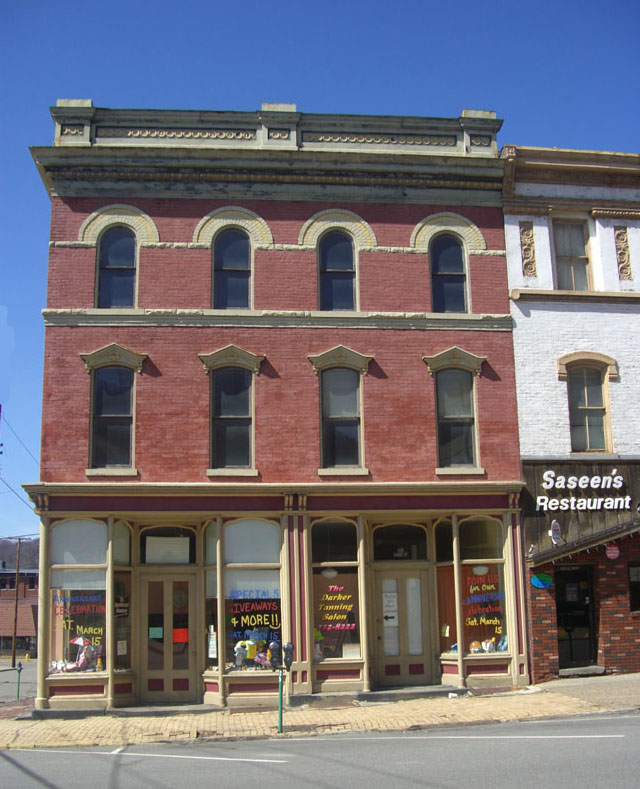
c1880. Victorian Italianate: 3-stories and basement
Current (1983) use: American Antiques.
City Directory 1880-1881: Charles Moenkemoeller, druggust.
From Fluty2-National Register Nomination
2147-9 Market - Louis Ebling Building
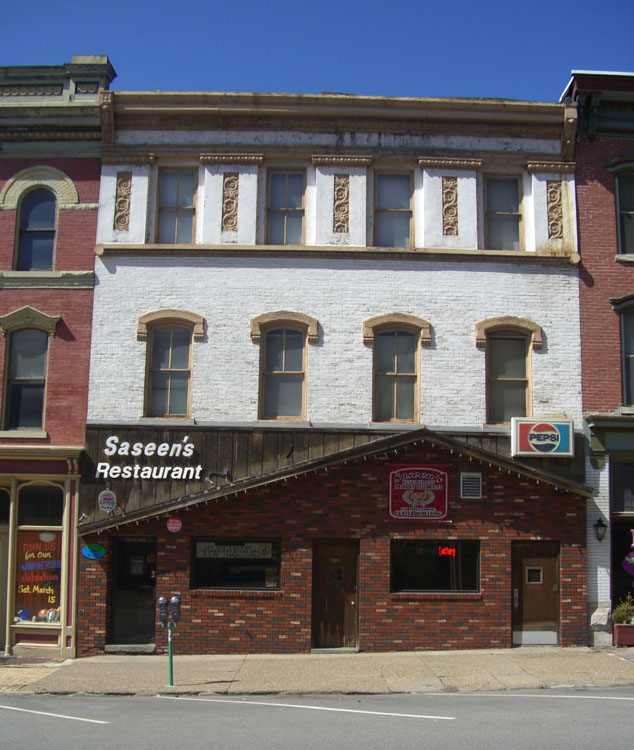
c1871. 3-stories (the third story was a later addition)
Current use: Saseen's Supper Club, and apartments; the same in 2009
City Directory 1874-1875: C.W. Driehorst, cigar maker & August Eberling, shearer at 2149; Martin Smith retail notions at 2147.
Business and real estaste offered in 2012 for $189,000.
From Fluty2-National Register Nomination
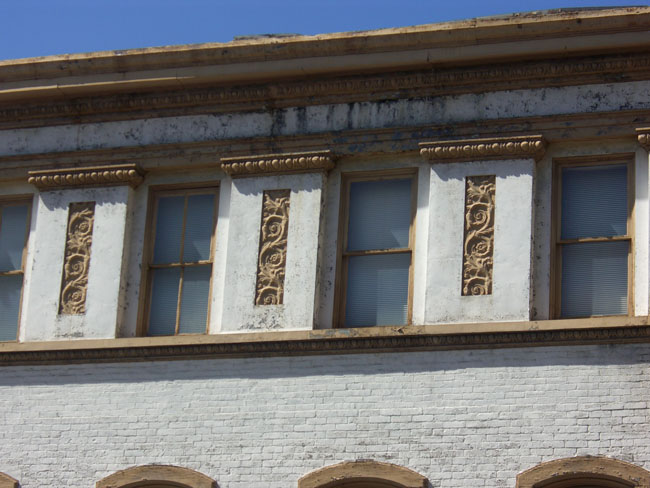
2143-5 Market - Hosenfeld Building

c1870. Victorian Italianate: 3-stories
Current (1983) use: Marcel's Shoes at 2145 and apartments; in 2008 restored and became Later Alligator Restaurant
City Directory 1877-1878: Andrew J. Hosenfeld saloon; residence same.
From Fluty2-National Register Nomination
Friends of Wheeling description
2139-2141 Market - Elizabeth Emblen Building
no image
c1902. Victorian Italianate: 2-stories
Current (1983) use: 2139 James H. Emblem Co.; Wheeling Radio Supply at 2141.
City Directory 1903-1904: Alphonse Peters, dry goods, residence same.
From Fluty2-National Register Nomination
2131 to 2139 - old buildings and new cars.
2135 Market - Bott Building
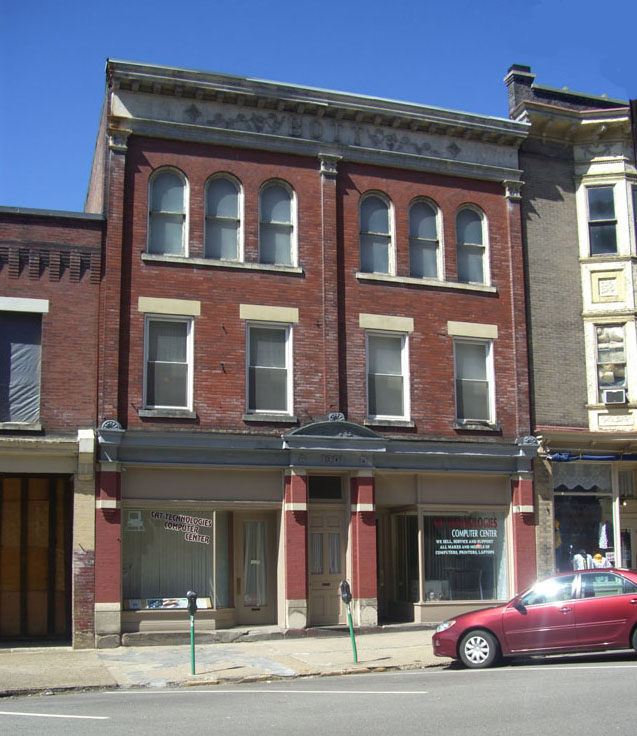
2135-2137 Market St.
c1901. Victorian and Italian Revival: 3-stories and basement.
Current (1983) use: 2135 Custom House Antiques Gallery; 2137 Valley Advertizing.
City Directory 1903: Bott & Hennes, saloon; Adolph Bott residence at 2137 and Frank Hennes residence at 2135.
Information from Fluty2-National Register Nomination
2131 Market - Woeber Building
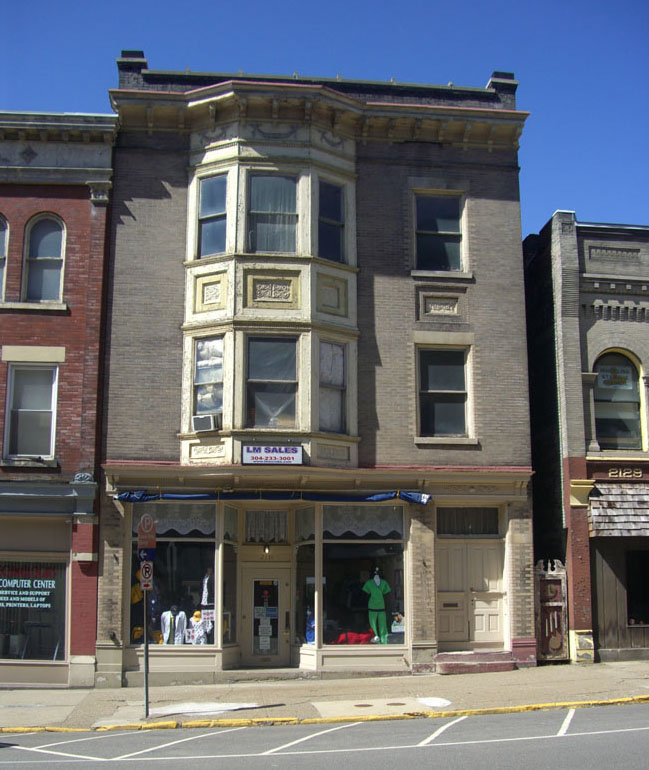
c1912. Victorian Italianate: 3-stories and basement
Current use: Apartments
Information from Fluty2-National Register Nomination
Medical uniform business and building offerred for $85,000 in 2012.
2129 Market - Auber Building
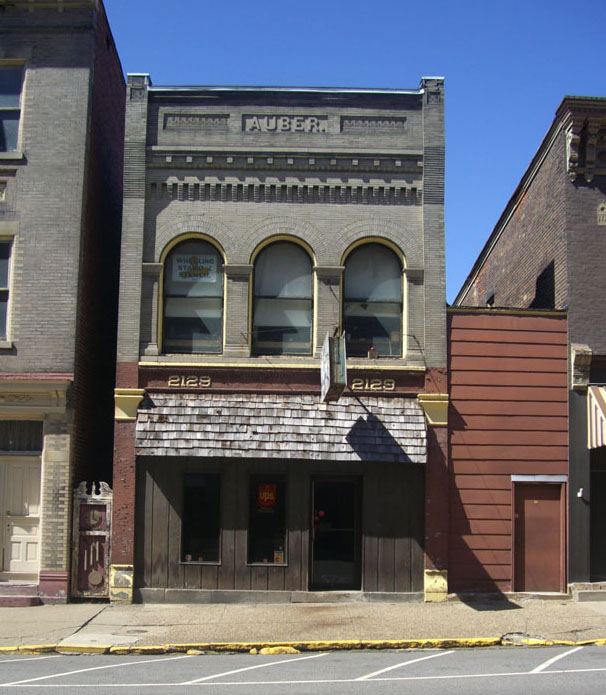
c1901. Italian precedent: 2 stories with basement at rear
Current (1983) use: Wheeling Stamp and Stencil
City Directory 1900-1902: Charles Reed, resident; John Auber, shoes and residence same.
Information from Fluty2-National Register Nomination
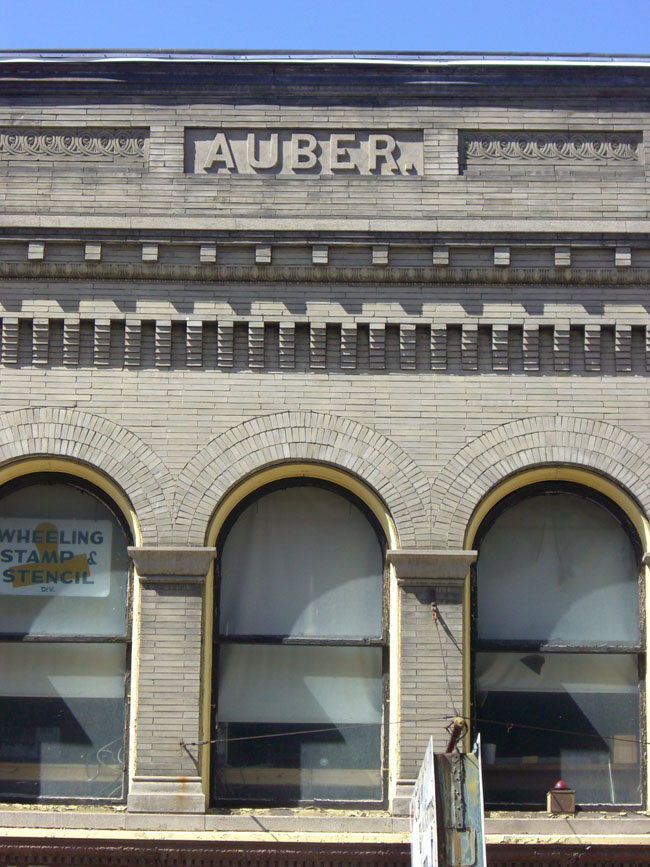
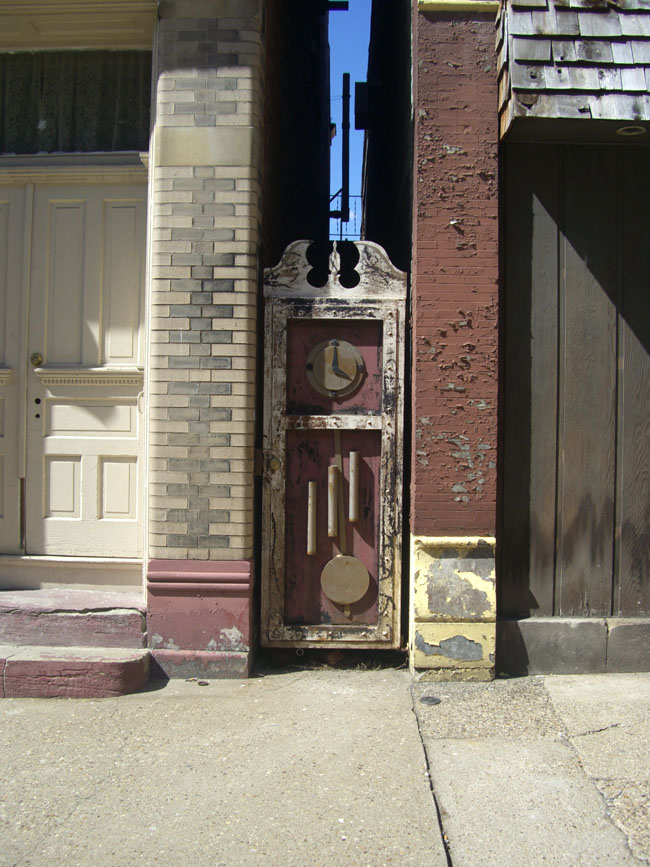
2125 Market St - Mary A. Reed Building
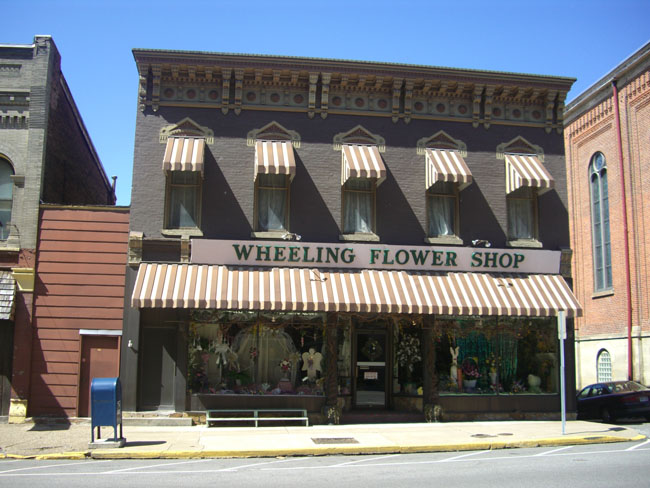 CAW photo, 2010.
CAW photo, 2010.
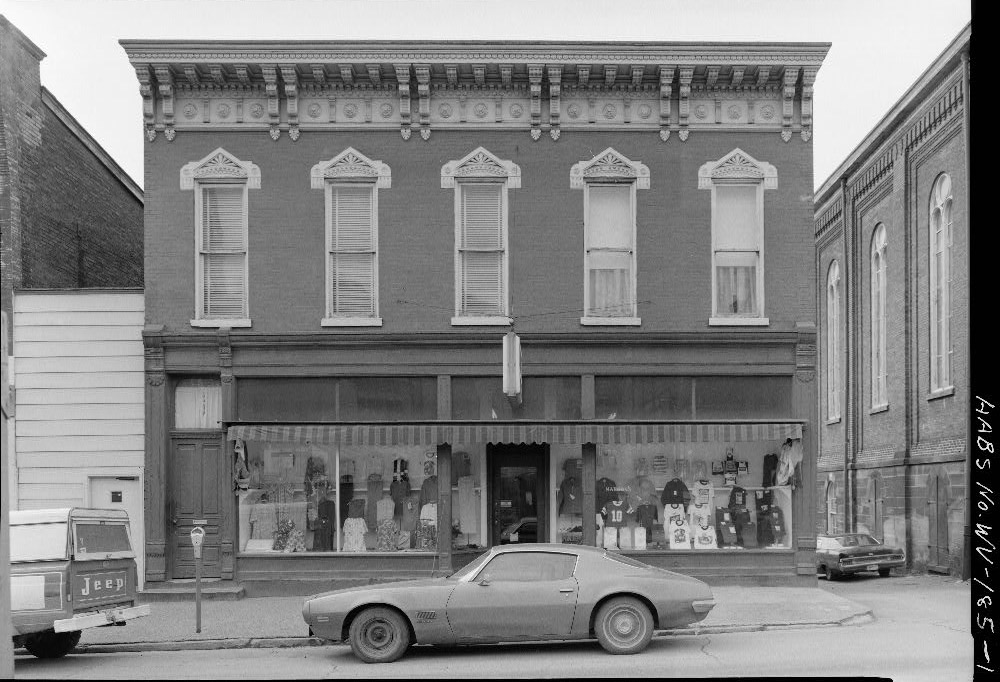
HABS Photo 1976.
c 1885. Italian Revival: 2-stories (HABS 1976)
Current use: Wheeling Flower Shop
1885 City Directory Supplement - John T. Reed, druggist.
From Fluty-National Register Nomination
From HABS, 1976:
This 1885 dry goods store has a long history of mercantile activity in the Centre Market area of Wheeling. The Market Street facade reveals a sharp distinction between the commercial and residential functions of the building. The first floor facade has little relieving design while the second floor facade is replete with elaborate decorative detail. The many years of continuous mercantile activity in the Reed Building have proven that a building's facade is its own best advertisement.
